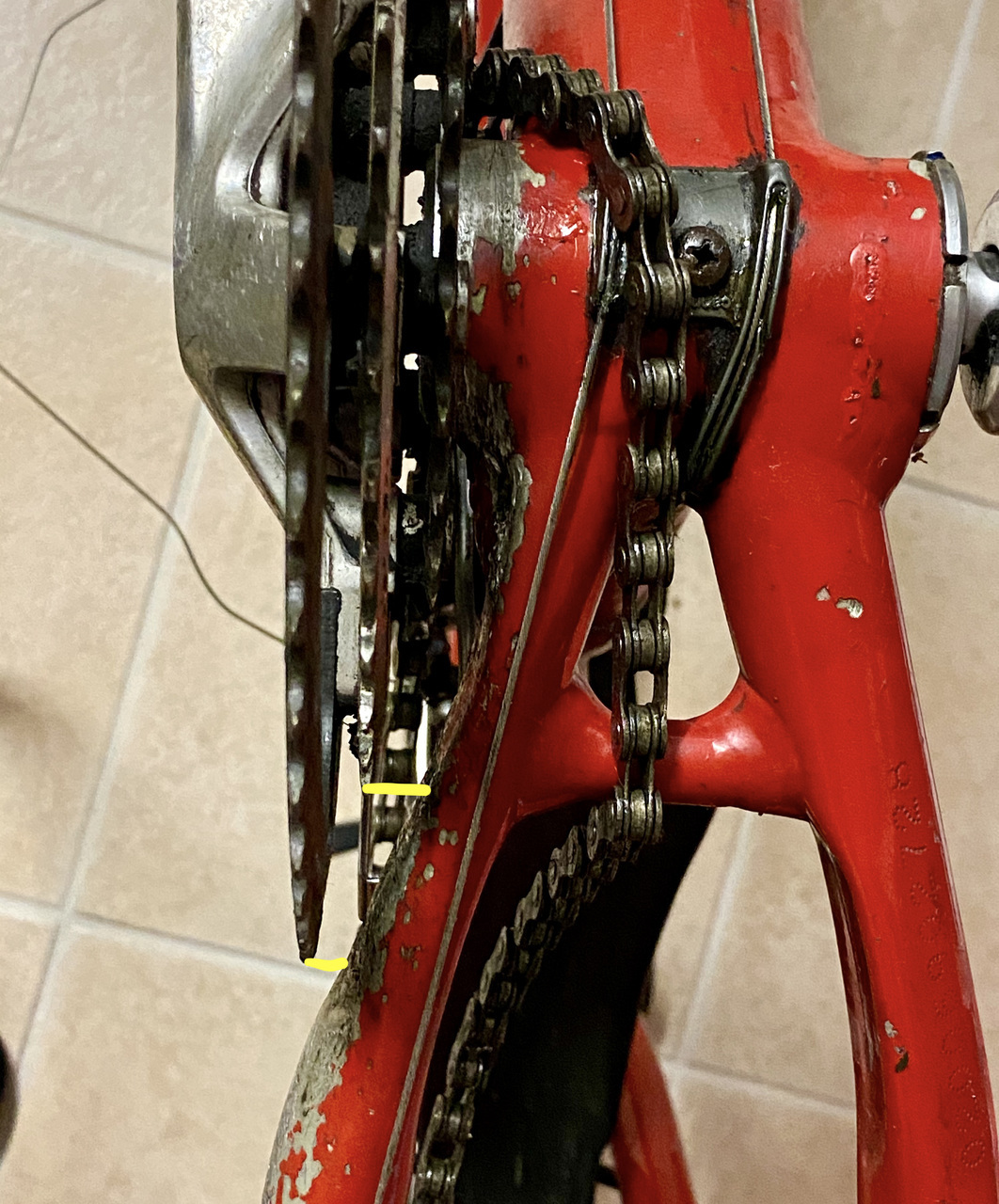So I took some measurements on a 3.0 MTB frame (SM 400, size 20), built 6/1990 (great VIN decoder on this site!), what makes me believe these frames would actually work very well with a modern road/gravel group:
- Drop out space is 130 mm.
- BSA 68 mm bottom bracket.
- I measured the chainline with the installed Suntour 3x cranks and I read for the middle chain ring approx. 45 - 46 mm. Looking at the frame from below, I estimate that the chainstay leaves enough space for a 42 t chainwheel at that chainline. At roughly 50mm chainline (approx. outer chainring), I think up to 50 t should work. A chainline between 45-50 mm should work fine with 130 mm rear hubs.



